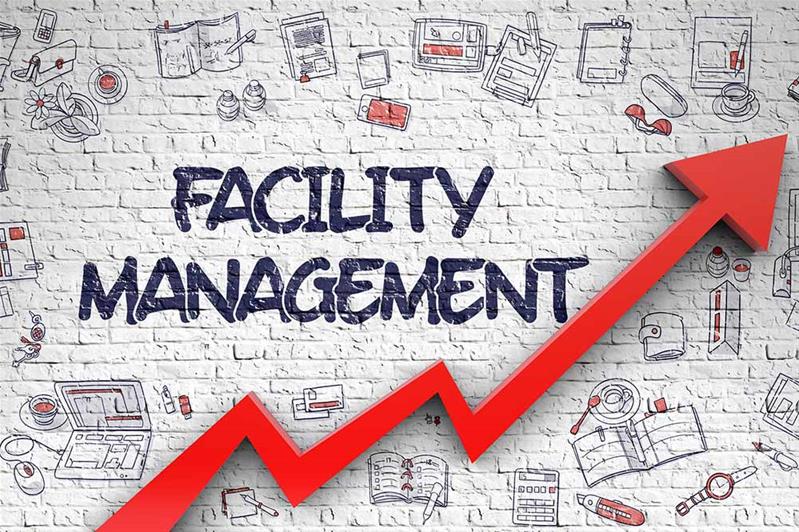How Total Facility Management Enhances Productivity and Operational Success
How Total Facility Management Enhances Productivity and Operational Success
Blog Article
Why Total Facility Management Is Crucial for Business Success
Total Facility Management (TFM) serves as a cornerstone for service success by balancing varied functional facets such as upkeep, area utilization, and security actions. As services browse a competitive landscape, recognizing the diverse advantages of TFM can be crucial in driving expense performance and enhancing worker efficiency.
Recognizing Total Facility Management
Total Facility Management (TFM) encompasses a thorough strategy to managing a company's buildings and associated services to ensure optimal functionality, safety, and efficiency. TFM integrates various self-controls, including upkeep, operations, space management, and security procedures, to develop a natural framework that supports an organization's core objectives.
At its core, TFM aims to improve the processes associated with facility management, enhancing and reducing redundancies service distribution. This technique includes the sychronisation of tasks connected to building management, such as repairs, cleansing, and power management, to foster a productive environment for stakeholders and workers alike. TFM additionally stresses the relevance of executing finest practices and ingenious technologies to improve service high quality and minimize functional prices.
By lining up facility management activities with business goals, TFM enhances general performance while ensuring compliance with health, safety and security, and environmental laws. Hence, TFM offers not just as a logistical function but also as a calculated property, adding to a company's long-lasting sustainability and growth.
Secret Benefits of TFM
Leveraging a thorough approach, companies that carry out Total Facility Management (TFM) unlock a myriad of benefits that add to overall organization success. One of the primary benefits of TFM is the improvement of operational performance. By combining facility solutions under a unified management framework, companies can enhance procedures, lower redundancies, and enhance interaction across divisions.
Furthermore, TFM promotes an aggressive maintenance approach, which minimizes downtime and expands the life expectancy of facilitiess and devices (Total Facility Management). This positive strategy not just boosts productivity but also cultivates a safer working setting, inevitably bring about higher employee complete satisfaction and retention prices
Furthermore, TFM assists in better source allotment by providing understandings into facility performance metrics. Organizations can identify locations for enhancement, enabling them to make informed choices that align with their calculated goals.
TFM and Expense Performance
Achieving expense effectiveness is an essential objective for companies, and Total Facility Management (TFM) plays an essential role in this endeavor - Total Facility Management. By integrating various facility solutions under a solitary management framework, TFM allows organizations to simplify procedures and reduce redundancies. This holistic technique brings about significant price savings, as it gets rid of the requirement for multiple suppliers and streamlines procurement procedures
Moreover, TFM fosters aggressive upkeep strategies, which reduce the threat of costly repair services and downtime. By prioritizing preventative actions, companies can expand the life expectancy of their properties and reduce unanticipated expenditures. In addition, TFM includes energy management methods, which can significantly reduce energy costs with effective source usage.
The centralization of information and analytics within TFM allows organizations to make enlightened financial decisions. By recognizing fads and locations for improvement, TFM makes it possible for tailored methods that further improve expense management. The scalability of TFM services makes sure that as companies expand, their facility management practices stay efficient and aligned with economic objectives.
Enhancing Staff Member Performance
A well-managed facility can dramatically increase worker performance by developing a helpful workplace. Efficient best site Total Facility Management (TFM) ensures that all facets of the work environment-- from lights and temperature to cleanliness and safety-- are optimized. When workers operate in an area that is properly maintained and comfy, they are extra most likely to focus on their jobs, resulting in greater output and job contentment.
Moreover, TFM can improve collaboration through the calculated design of common locations, motivating teamwork and advancement. By purchasing the appropriate resources and innovation, organizations can assist in smooth communication and enhance workflows, better improving productivity. Normal upkeep and prompt responses to facility concerns prevent disruptions that can or else hinder performance.
Additionally, a healthy and balanced and safe workplace, supported by TFM methods, minimizes absenteeism and promotes well-being, directly correlating with boosted performance degrees. Ultimately, focusing on facility management is an investment not just in physical assets however additionally in the labor force itself. By promoting an environment that sustains worker needs and choices, businesses can grow a more engaged and effective labor force, driving overall success and affordable benefit.

Future Trends in TFM
Embracing technical advancements is readied to reshape the landscape of Total Facility Management (TFM) in the coming years. As the demand for this article efficiency and sustainability rises, TFM will progressively adopt smart building innovations, incorporating Internet of Points (IoT) tools to keep track of and take care of facility procedures in real-time. This shift will allow proactive maintenance, substantially reducing functional prices and boosting service delivery.

Sustainability continues to be a critical focus, with TFM experts expected to focus on eco-friendly techniques. This includes utilizing sustainable power resources and optimizing waste management systems to lower the carbon impact of facilitiess.
Remote management abilities will likewise be increased, allowing facility managers to supervise procedures from virtually anywhere. This versatility will certainly come YOURURL.com to be essential as organizations adapt to crossbreed job models. In recap, the future of TFM is positioned for makeover via modern technology, sustainability, and improved operational methods, ensuring businesses continue to be affordable in a developing landscape.
Conclusion
By integrating various functional features, TFM boosts effectiveness and straightens facility management with business objectives. As services increasingly adopt sustainable practices and ingenious innovations, the value of TFM will certainly continue to expand, guaranteeing long-lasting functional efficiency and competitiveness in an evolving industry.

Report this page